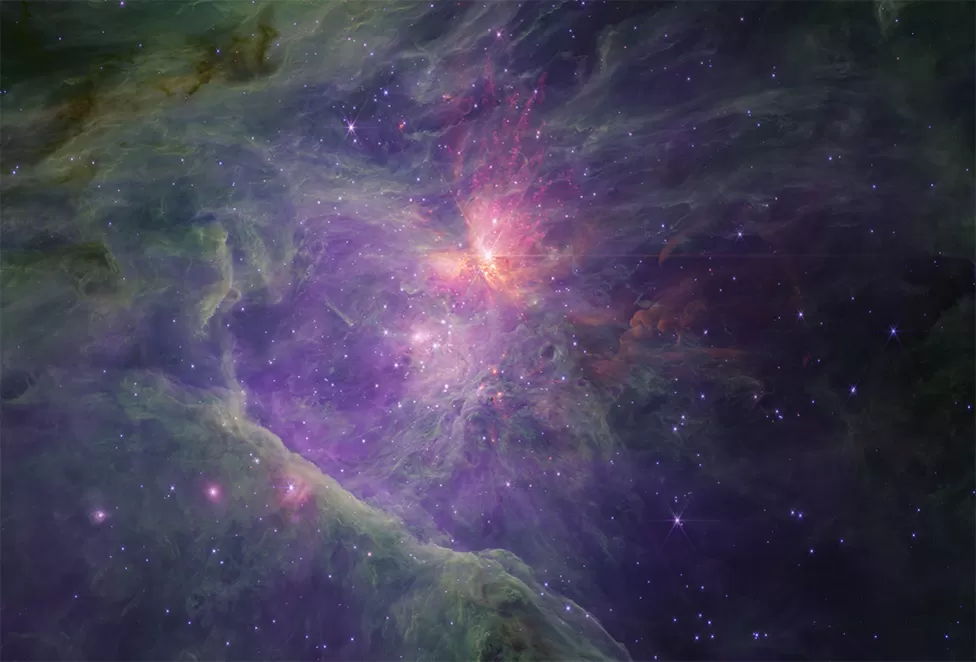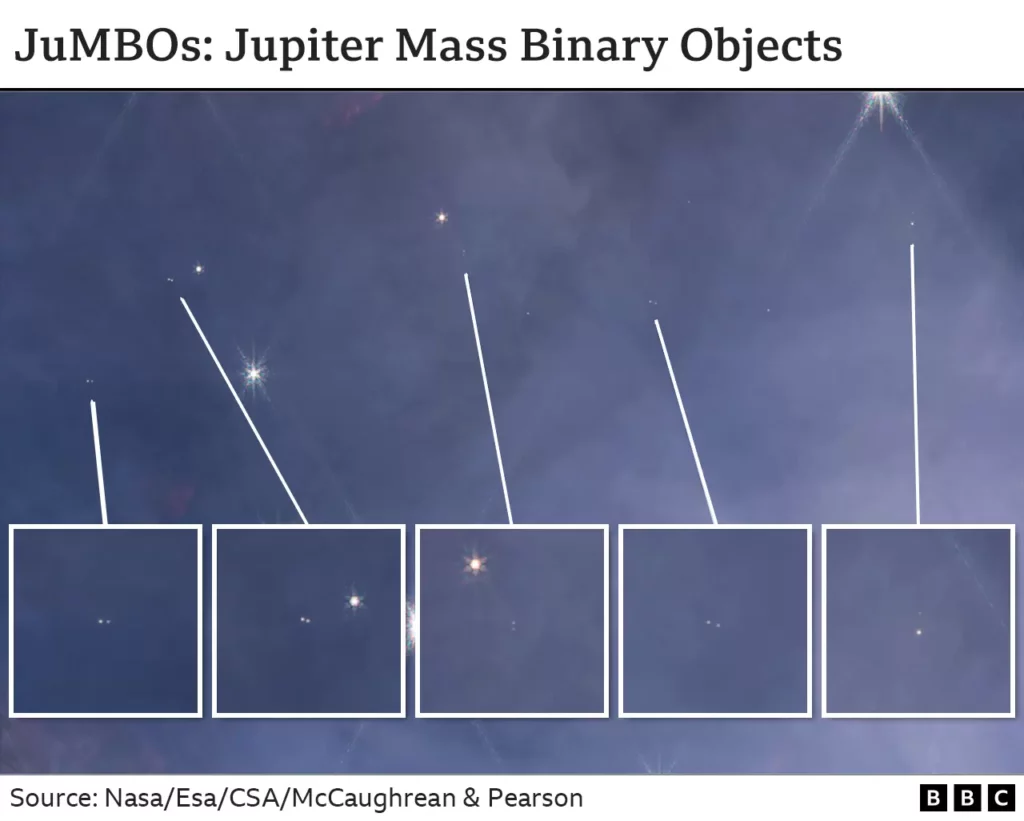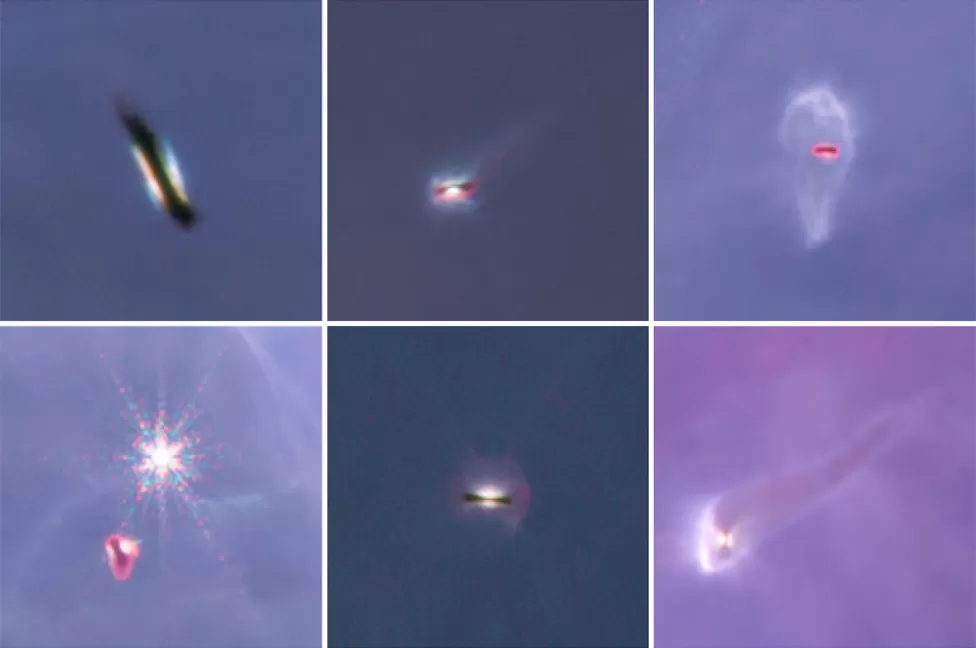The James Webb Space Telescope (JWST) has made a startling discovery of Jupiter-sized objects, unattached to any star, floating freely in space.

These objects, found in the Orion Nebula, are intriguingly moving in pairs and have been dubbed “Jupiter Mass Binary Objects” or “JuMBOs.”
The Mystery of JuMBOs
The JWST observed approximately 40 pairs of these JuMBOs in a detailed survey of the Orion Nebula, which is just 1,400 light-years away from Earth. The objects present a puzzling phenomenon for astronomers.
One theory suggests that these JuMBOs originated from regions in the nebula where the density of material was insufficient to form stars. Another hypothesis posits that they were initially formed around stars and were later ejected into interstellar space through various interactions. “The ejection hypothesis is the favored one at the moment,” said Prof Mark McCaughrean, the European Space Agency’s senior science advisor.
Implications for Planetary Formation Theories
The discovery of JuMBOs challenges existing models of planetary system formation. Dr. Heidi Hammel, a multidisciplinary scientist on JWST, stated that there are no current models that predict the ejection of binary pairs of planets. “Maybe all star formation regions host these double-Jupiters, and we just haven’t had a telescope powerful enough to see them before,” she added.

The Role of JWST’s Advanced Technology
The JWST’s remarkable resolution and infrared sensitivity have significantly contributed to this discovery. The telescope’s NIRCam instrument acquired a mosaic of 700 views over a week of observations, providing a comprehensive view of the Orion Nebula.

This region of space is not only the closest large star-forming area to Earth but also contains thousands of young stars, some of which are surrounded by dense discs of gas and dust that may be forming planets.
In summary, the discovery of JuMBOs by the JWST opens up new questions about planetary formation and the mechanisms that could lead to the ejection of such binary objects into space. It also highlights the telescope’s capability to make groundbreaking discoveries that challenge our current understanding of the universe.

